465.
In
order to have glyph Ca9-9 as number 236 + 1 ('one
more') - counted from the Navel of the Horse
(Sirrah) - it was necessary to put 60 glyphs before
Ca3-10 - where the Full Moon was at the First
3-stone Place (48 Persei):

| JAN 19 |
20 |
21 (101 - 80) |
22 → Mercury |
| MARCH 17 (76 = 140 - 64) |
18 |
19 |
20 (79 = 22 + 3 * 19) |
 |
 |
 |
 |
| Ca3-9 |
Ca3-10 |
Ca3-11 |
Ca3-12 (63 = 7 * 9) |
| tapamea tagata kua iri |
ki te pa |
kua hua |
ki te kotiga |
|
Hua. 1. Testicle. 2. Figuratively: son, hua tahi, only son; fruits of the earth; to grow well (of fruits). 3. To cause a fight, a quarrel. Hua-ai, generation, as lineage of direct descendents; contemporaries. Huahua, coccyx of bird, 'parson's nose': huahua moa, huahua uha. Huataru, a creeper (Chenopodium ambiguum). Vanaga. 1. The same; ki hua, again, to continue, to strain, to struggle, to move, to repeat, over and above. Mq.: hua, the same, to return, to recommence. 2. To bloom, to sprout; flower, fruit (huaa); huaa tae oko, huaa vahio, young fruit; hua atahi, only son; huahaga, fruit; mei te huahaga o tokoe kopu, the fruit of thy body; tikea huahaga, deceptive appearance. P Pau.: ua, to be born; huahaga, lineage. Mgv.: hua, to produce (said of trees, grain, etc.), blooming time of flowers, abundance of fruit. Mq.: hua, to produce, to bear fruit. Ta.: ua, to sprout. Huahua. 1. Tailless fowl. 2. Vein, tendon, line. 3. Mgv.: huahua, pimples covering the face. Ta.: huahua, id. Mq.: hua, tubercules. Sa.: fuafua, abscess on hand or feet. Ma.: huahua, small pimples. Pau.: Hua-gakau, rupture. Ta.: áau, entrails. Sa.: ga'au, id. Ma.: ngakau, id. Churchill. 1. Fruit. 2. Egg. 3. Tā hua = 'genealogical writing' or 'same writing'. Fischer. |
| CLOSE TO THE FULL MOON: |
| May 20 (140)
4h (60.9)
JĪSHUĬ (Piled-up Waters) = λ Persei (60.7)
COR CAROLI (α Canum Ven.)
|
21 First 3-stone Place
υ (48) Persei (61.2) |
22 (21 + 121 = 142)
BEID (Egg) = ο¹ Eridani (62.2), μ Persei (62.8)
VINDEMIATRIX ( ε Virginis) |
23 (11 * 13 = 143)
Al Dabarān-2 (The Follower)
HYADUM I = γ Tauri (63.4)
*22 = *63.4 - *41.4 |
| 'April 23 (*60 - * 27 = *33) |
24 |
25 (115 → Mercury → Hermes Trismegistos) |
26 |
|
... [E:17] On the twenty-fifth day of the first month (Vaitu Nui), Ira and Makoi set sail; on the first day of June ('Maro'), the bow of Ira's canoe appeared on the distant horizon, came closer and closer on its course, and sailed along, and finally (one) could see the (new home) land ... |
| "April 9 (140 - 41 = 99) |
10 (100) |
11 (*21) |
12 |
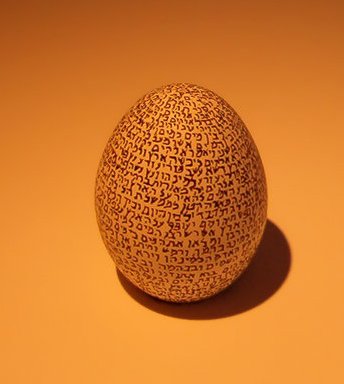 |
| CLOSE TO THE SUN: |
| Nov 19 (140 + 183 = 323)
16h (243.5)
ACRAB (Scorpion) = β Scorpii, JABHAT AL ACRAB (Forehead of the Scorpion) = ω Scorpii (243.3), θ Lupi, RUTILICUS = β Herculis (243.5), MARFIK (Elbow) = κ Herculis (243.7), φ Herculis (243.8) |
20
ψ Scorpii (244.6), LESATH (Sting) = ν Scorpii (244.8) |
21 (*245)
χ Scorpii (245.1), YED PRIOR (Hand in Front) = δ Ophiuchi, δ Tr. Austr. (245.5) |
22
YED POSTERIOR (Hand Behind) = ε Ophiuchi, RUKBALGETHI SHEMALI (Northern Knee of the Giant) = τ Herculis (246.6). δ Apodis (246.7), ο Scorpii (246.8) |
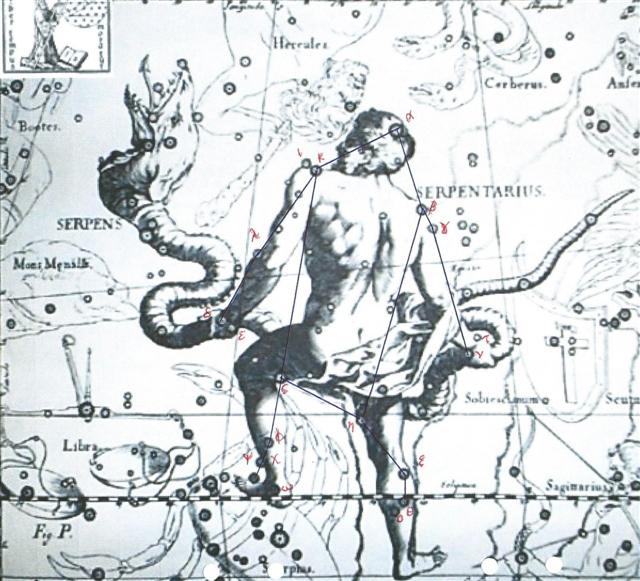 |
| 60 |
 |
175 = 350 / 2 |
 |
|
Ca3-10 |
Ca9-9 (236 + 1) |
|
υ (48) Persei |
COR SERPENTIS |
| 177 = 354 / 2 = 6 * 29½ |
... For they say that the course of human life resembles the letter Y, because every one of men, when he has reached the threshold of early youth, and has arrived at the place 'where the way divides itself into two parts, is in doubt, and hesitates, and does not know to which side he should rather turn himself´...
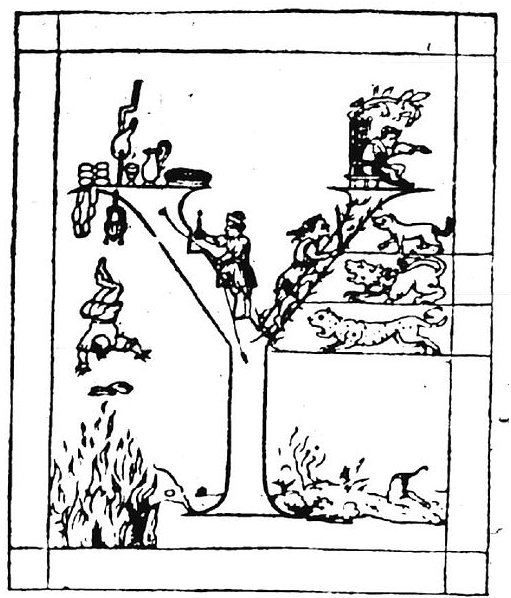
| CLOSE TO THE SUN: |
| 18 March |
19 (78) |
20 |
21 (150 - 70) |
| MARCH 24 |
JULIAN EQUINOX |
26 (*5) |
27 |
 |
 |
 |
 |
| Ga1-3 |
Ga1-4 |
Ga1-5 |
Ga1-6 |
| no star listed (67) |
Rohini-4 (The Red One) / Pidnu-sha-Shame-4 (Furrow of Heaven) / ANA-MURI-2 (Rear pillar - at the foot of which was the place for tattooing)
ALDEBARAN = α Tauri (68.2), THEEMIN = υ² Eridani (68.5) |
no star listed (69) |
no star listed (70) |
| May 27 |
28 (148) |
29 |
30 (*70) |
| °May 23 |
24 (144) |
25 (*65) |
26 |
| 'April 30 |
'May 1 (121) |
2 (*42) |
3 |
| 16 (471) |
"April 17 (107) |
18 (*28) |
19 |
| Itzam-Yeh (7-Macaw, Ursa Major) defeated - 28 May (148), 3149 BC |
March 19 (78), 1842 AD = Aldebaran (*68) |
| First 3-stone place - 21 May (141), 3114 BC |
March 12 (71), 1842 AD = υ (48) Persei (*61) |
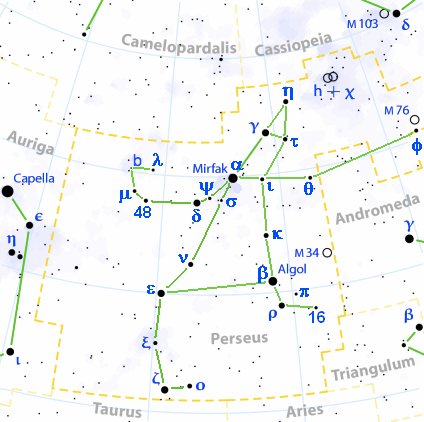 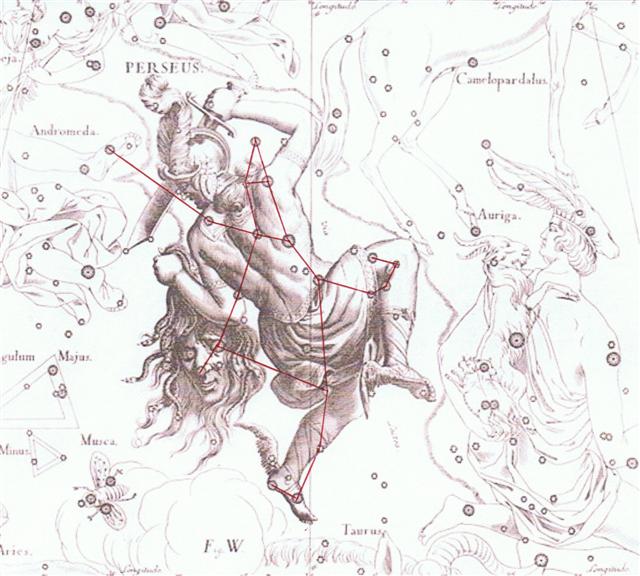
... For they say that the course of human life resembles the letter Y, because every one of men, when he has reached the threshold of early youth, and has arrived at the place 'where the way divides itself into two parts, is in doubt, and hesitates, and does not know to which side he should rather turn himself´... |
| Creation of our present world - 13 Aug (225), 3114 BC |
June 4 (155), 1842 AD = ο Leonis (*145) |
| Hun-Nal-Ye became the sky - 5 Febr. (36), 3112 BC |
Nov. 26 (330), 1842 AD = Dramasa (*320) |
|
21 May, 3114 BC - 13 August, 3114 BC = 225 - 141 = 84 (= 12 * 7)
21 May, 3114 BC - 5 February, 3112 BC = 542, which 'happens to be' the sum of 365 days and 6 * 29½ nights.
At the time of rongorongo the day May 28 (148, *68) was where Aldebaran rose with the Sun and 77 days later, in August 13 (225, *145) the Sun had reached the Knot (Ukdah) with the Full Moon at the Foundation (Bunda).
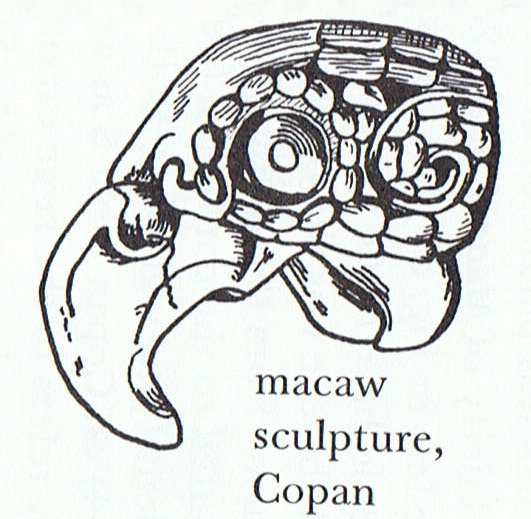 |
|
Epimenides the Cretan - who said that all the Cretans were liers - lived to be 157 years old, or to be 299 or 154:
 |
 |
 |
154 |
| Ca9-8 (8 * 29½) |
Ca9-9 |
Ca9-10 |
| ku tupu te poporo |
kotia |
kua rere |
|
Poporo. A plant (Solanum forsteri); poporo haha, a sort of golden thistle. Vanaga. A berry whose juice is mixed with ashes of ti leaves in tattoing. Ta.: oporo, a capsicum plant. The Tahiti oporo is not a degradation of poporo but is the original poro stem augmented by that o which in Tahiti is word-formative in a sense too elusive to find expression in European ideas. Mgv.: poporo, the July season when the leaves fall. Mq.: pororo, dry, arid. Sa.: palolo-mua, July. Ma.: paroro, cloudy weather. Poporohiva, milk thistle. Churchill. |
| 314 / 2 = 584 / 2 - 270 / 2 = 157 |
|
... 471 (= 229 + 242) = 1½ * 314 = 3 * 157 = 300 + 3 * 57, which should remind us of how Epimenides slept for 57 years in a cave (471 + 57 = 2 * 264 = 11 * 48) and how he then lived on to be 157 years (or 299 or 154) ... |
I have red-marked the fact that 314 / 2 = 157, i.e. how Epimenides seems to have lived for a quarter of the circle. And from the comment of Metoro we can guess that his lifetime corresponded to the dark (4th) quarter.
... Interestingly, since another meaning of shi is 'death', the number 4 is considered unlucky. For example, the floor numbering in hotels sometimes jumps mysteriously from 3 to 5; it is also considered unlucky to give four of something as a present
...
Number 154 will then be the difference between 157 and 3, as if his lifetime began with 3 days of 'only cold food served'.
As to 299 we can find an explanation on side b of the tablet, for 236 (= 8 * 29½) + 298 = 534 (= 542 - 8) = 6 * 89, where 89 seems to allude to 6h - with 6 * 6h / 24h = 1½ * 24h:

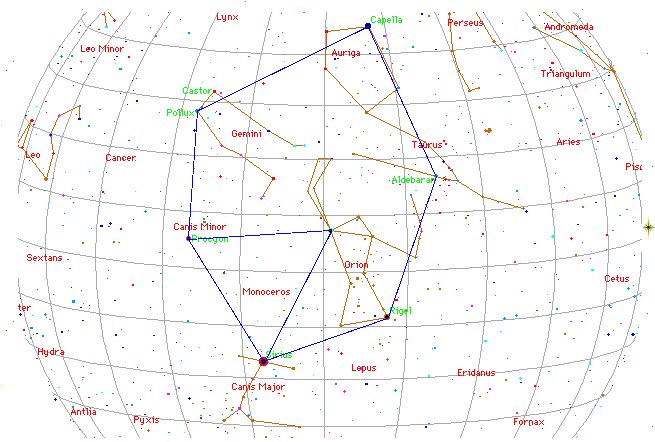
| ku tupu te poporo |
kotia |
kua rere |
ki te marama |
e moa |
haati kava |
e moa |
|
Poporo. A plant (Solanum forsteri); poporo haha, a sort of golden thistle. Vanaga. A berry whose juice is mixed with ashes of ti leaves in tattoing. Ta.: oporo, a capsicum plant. The Tahiti oporo is not a degradation of poporo but is the original poro stem augmented by that o which in Tahiti is word-formative in a sense too elusive to find expression in European ideas. Mgv.: poporo, the July season when the leaves fall. Mq.: pororo, dry, arid. Sa.: palolo-mua, July. Ma.: paroro, cloudy weather. Poporohiva, milk thistle. Churchill.
Koti. Kotikoti. To cut with scissors (since this is an old word and scissors do not seem to have existed, it must mean something of the kind). Vanaga. Kotikoti. To tear; kokoti, to cut, to chop, to hew, to cleave, to assassinate, to amputate, to scar, to notch, to carve, to use a knife, to cut off, to lop, to gash, to mow, to saw; kokotiga kore, indivisible; kokotihaga, cutting, gash furrow. P Pau.: koti, to chop. Mgv.: kotikoti, to cut, to cut into bands or slices; kokoti, to cut, to saw; akakotikoti, a ray, a streak, a stripe, to make bars. Mq.: koti, oti, to cut, to divide. Ta.: oóti, to cut, to carve; otióti, to cut fine. Churchill. Pau.: Koti, to gush, to spout. Ta.: oti, to rebound, to fall back. Kotika, cape, headland. Ta.: otiá, boundary, limit. Churchill.
Rere. To jump; to run; to fly. Rere-taúra, to carry a child astride on one's shoulder: ku rere-taúra-á i te poki e te matu'a ki te gao, the mother carries her child astride her neck. Vanaga. 1. To fly, to run, to leap, to scale, to be carried away by the wind; ika rere, flying fish; rere aruga, to rebound; hetuu rere, meteor, flying star. Hakarere, to leap. P Pau.: rere, to soar, to fly; fakarere, to precede. Mgv., Ta.: rere, to fly, to leap. 2. To come, to reach to. Mq.: éé mai, to come. 3. To swerve, to deviate. (4. Hakarere, to cease, desist, postpone, quit, vacation; tae hakarere, perseverance. Mq.: rere, to disappear. 5. Hakarere, to save, preserve, put, place, reserve, burden, destine. 6. Hakarere, to abandon, forsake, give up, depose, expose, leave, omit, abjure, repudiate; hakarere ki te hau, uncover the head; hakarere ki te vie, to divorce, hakarere ki raro, to put down, tooa te kiko e ivi i hakarere, to strip off the flesh. Mq.: éé, to run away, to escape. 7. Hakarere? Ikapotu hakarere, to abut, to adjoin; e tahi hakarere, synonym.) Churchill. Vi.: Lele, the end of a branch farthest from the body of a tree; leletha, to bend a branch in order to gather the fruit on it. Churchill 2. In the present phase of Polynesian lele so much means to fly that the plainest way of particularizing birds is to describe them as the flying animals, manulele. But to manifest that flight, an exercise or balancing of wings, was by no means the primordial sense, for how could that give rise to a description of water in the water-courses? It will be no end to mass the several significations which lele exhibits ... Flight of birds ... Wind drive ... Meteors ... To leap ... To run ... Flow of water ... To swim ... To sail ... These several activities are exercised in earth, air, and water. The common factor is the swift motion. The means of motion cut no figure. It is an invisible means in the driving of the wind, the flash of the meteor silent athwart the sky on its lethal errand, the slip and slide of the stream in its deep course, the set of the sea, the gliding of the canoe upon its surface. Churchill 2. |
 |
 |
 |
 |
 |
 |
 |
| Ca9-8 (8 * 29½) |
Ca9-9 (236 + 1) |
Ca9-10 |
Ca9-11 |
Ca9-12 |
Ca9-13 |
Ca9-14 (242) |
| CLOSE TO THE FULL MOON: |
| Nov 12 φ Bootis (236.2), ω Lupi, τ Librae (236.3), ψ¹ Lupi (236.7), ζ Cor. Borealis (236.9) |
13
κ Librae (237.2), ι Serpentis (237.4), ψ² Lupi, ρ Oct. (237.5), γ Cor. Borealis, η Librae (237.7), COR SERPENTIS = α Serpentis (237.9) |
14
π Cor. Borealis, UNUK ELHAIA (Necks of the Serpents) = λ Serpentis (238.1), CHOW = β Serpentis (238.6) |
15
κ Serpentis (239.3), δ Cor. Borealis, TIĀNRŪ = μ Serpentis (239.5), χ Lupi, (239.6), ω Serpentis (239.7), BA (= Pa) = ε Serpentis, χ Herculis (239.8). κ Cor. Borealis, ρ Serpentis (239.9) |
16
λ Librae (240.0), β Tr. Austr. (240.3), κ Tr. Austr. (240.4), ρ Scorpii (240.8) |
17 (321)
Iklīl al Jabhah-15 (Crown of the Forehead) / Anuradha-17 (Following Rādhā) / Room-4 (Hare)
ξ Lupi, λ Cor. Bor.(241.1), ZHENG = γ Serpentis, θ Librae (241.2), VRISCHIKA = π Scorpii (241.3), ε Cor. Borealis (241.5), DSCHUBBA (Front of Forehead) = δ Scorpii (241.7), η Lupi (241.9 |
18
υ Herculis (242.3), ρ Cor. Borealis (242.4), ι Cor. Borealis (242.5), θ Draconis (242.6), ξ Scorpii (242.7)
*201 = *242.4 - *41.4
SCHEDIRr (α Cassiopeiae)
|
|
JULY 14 |
15 |
16 |
17 |
18 |
19 (200) |
20 |
 |
| i te mauga pu hia |
E rima ki te henua |
koia ku honui |
erua maitaki |
ko koe ra |
 |
 |
 |
 |
 |
 |
| 16h (243.5) |
Ca9-16 |
Yed Prior (Hand in Front) |
Ca9-18 (246) |
Ca9-19 |
Kajam (Club) |
|
... A very detailed myth comes from the island of Nauru. In the beginning there was nothing but the sea, and above soared the Old-Spider. One day the Old-Spider found a giant clam, took it up, and tried to find if this object had any opening, but could find none. She tapped on it, and as it sounded hollow, she decided it was empty. By repeating a charm, she opened the two shells and slipped inside. She could see nothing, because the sun and the moon did not
then exist; and then, she could not stand up because there was not enough room in the shellfish. Constantly hunting about she at last found a snail. To endow it with power she placed it under her arm, lay down and slept for three days. Then she let it free, and still hunting about she found another snail bigger than the first one, and treated it in the same way. Then she said to the first snail: 'Can you open this room a little, so that we can sit down?' The snail said it could, and opened the shell a little. Old-Spider then took the snail, placed it in the west of the shell, and made it into the moon. Then there was a little light, which allowed Old-Spider to see a big worm. At her request he opened the shell a little wider, and from the body of the worm flowed a salted sweat which collected in the lower half-shell and became the sea. Then he raised the upper half-shell very high, and it became the sky. Rigi, the worm, exhausted by this great effort, then died. Old-Spider then made the sun from the second snail, and placed it beside the lower half-shell, which became the earth ... |
| CLOSE TO THE FULL MOON: |
| Nov 19 |
20 |
21 (325) |
22 |
23 |
24 (248 + 80) |
| 'Oct 23 |
24 |
25 (298 = 325 - 27) |
26 |
27 |
28 |
| "Oct 9 |
10 |
11 (284 = 325 - 41) |
12 |
13 |
14 |
| SEPT 16 |
17 |
18 (261 = 325 - 64) |
19 |
20 |
21 |
| JULY 21 |
22 → π |
23 (325 - 121 = 204) |
24 |
25 |
26 |
 |
| CLOSE TO THE SUN: |
| May 20 |
21 |
22 (325 - 183) |
23 |
24 (144) |
25 (290 / 2) |
| 285 |
kua tupu te kihikihi |
ku kikiu |
te henua |
Te hokohuki |
te moko |
|
Kihi.
Kihikihi,
lichen;
also:
grey,
greenish
grey,
ashen.
Vanaga.
Kihikihi,
lichen
T,
stone
T.
Churchill.
The
Hawaiian
day
was
divided
in
three
general
parts,
like
that
of
the
early
Greeks
and
Latins,
-
morning,
noon,
and
afternoon
-
Kakahi-aka,
breaking
the
shadows,
scil.
of
night;
Awakea,
for
Ao-akea,
the
plain
full
day;
and
Auina-la,
the
decline
of
the
day.
The
lapse
of
the
night,
however,
was
noted
by
five
stations,
if I
may
say
so,
and
four
intervals
of
time,
viz.:
(1.)
Kihi,
at 6
P.M.,
or
about
sunset;
(2.)
Pili,
between
sunset
and
midnight;
(3)
Kau,
indicating
midnight;
(4.)
Pilipuka,
between
midnight
and
surise,
or
about
3
A.M.;
(5.)
Kihipuka,
corresponding
to
sunrise,
or
about
6
A.M.
...
(Fornander) |
 |
 |
 |
 |
 |
| Cb6-27 (264 + 270) |
Cb6-28 (→ 2 * 314) |
Cb6-29 (536) |
Cb7-1 (290 / 2) |
Cb7-2 (392 + 146) |
| CLOSE TO THE FULL MOON: |
| (328 + 286 = 614 = 534 + 80) |
Sept 6 (615 = 249 + 366) |
7 (250 = 67 + 183) |
8 |
9 |
| CLOSE TO THE SUN: |
| (145 + 286 = 431 = 351 + 80) |
March 7 (432 = 66 + 366) |
8 (67) |
9 |
10 |
... The original story was by Diogenes Laertius, an Epicurean philosopher circa early half third century, in his book On the Lives, Opinions, and Sayings of Famous Philosophers. The story is in Chapter ten in his section on the Seven Sages, who were the precursors to the first philosophers. The sage was Epimenides. Apparently Epimenides went to sleep in a cave for fifty-seven years. But unfortunately, 'he became old in as many days as he had slept years'. Although according to the different sources that Diogenes relates, Epimenides lived to be one hundred and fifty-seven years, two hundred and ninety-nine years, or one hundred and fifty-four years. A similar story is told of the Seven Sleepers of Ephesus, Christian saints who fall asleep in a cave while avoiding Roman persecution, and awake more than a century later to find that Christianity has become the religion of the Empire
...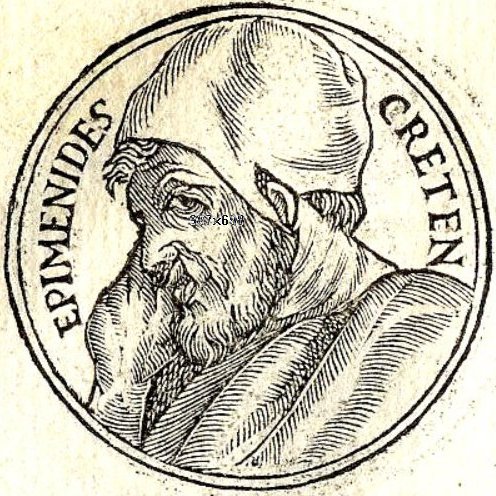
|



















